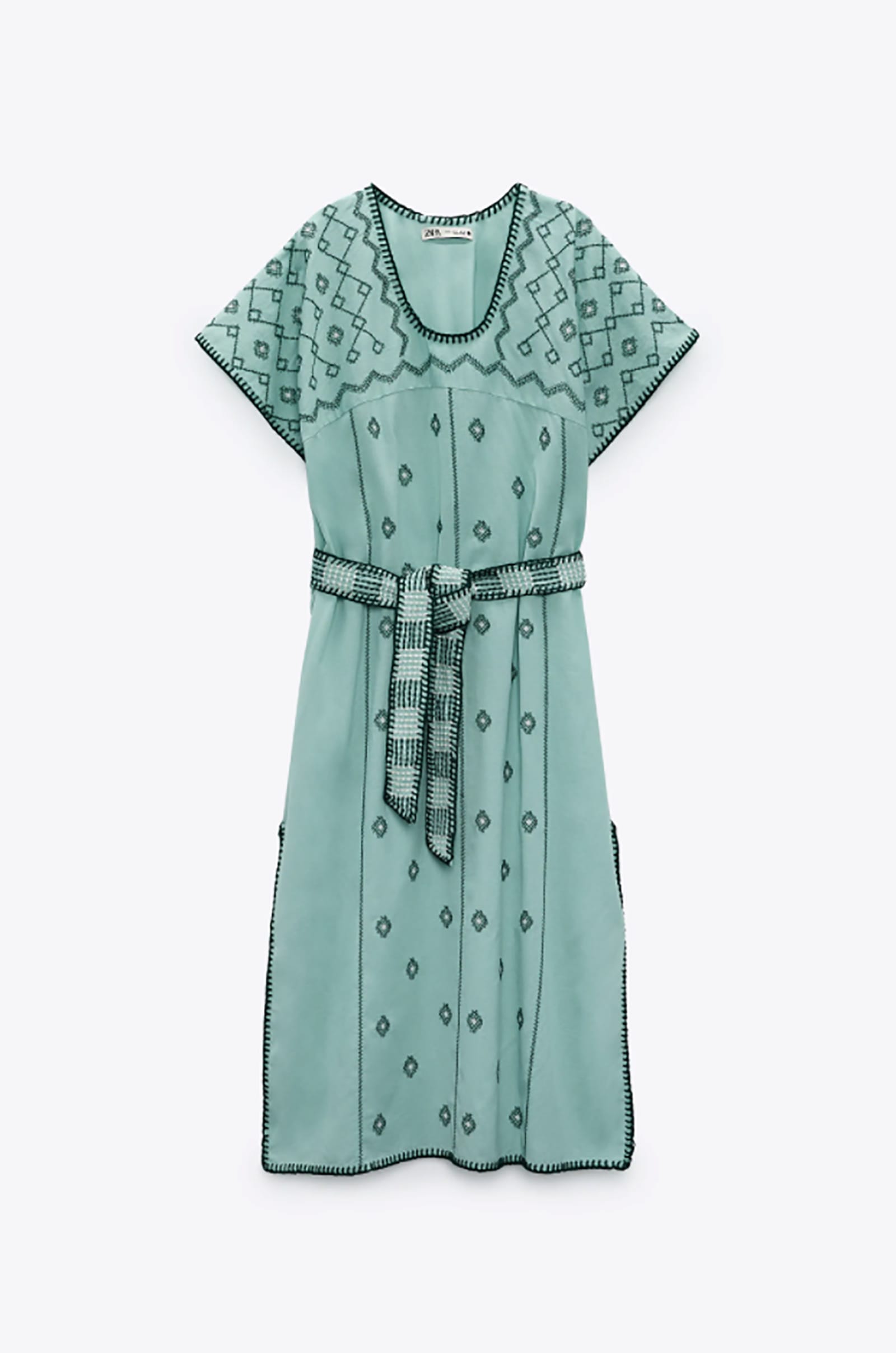دبي، الإمارات العربية المتحدة (CNN) -- اتهمت المكسيك العلامات التجارية للأزياء "زارا" و"أنثروبولوجي" و "باتوول" بالاستيلاء الثقافي، مدعية أن هذه العلامات "استخدمت" التصاميم التي ابتكرها السكان الأصليون في البلاد.
وطلبت وزارة الثقافة المكسيكية في سلسلة من الخطابات الموجهة إلى العلامات التجارية "تفسيراً عاماً"، كما دعت إلى "رد الفوائد إلى المجتمعات الإبداعية" التي تعتقد أنها ابتكرت تقنيات التطريز وزخارف التصميم.
ونُشرت الخطابات، الموقعة من قبل وزيرة الثقافة أليخاندرا فراوستو غيريرو والمؤرخة بتاريخ 13 مايو/ أيار الماضي، يوم الجمعة.
وتحدّد الخطابات العديد من قطع الملابس من العلامات التجارية الثلاث إلى جانب أمثلة من الملابس التي صممها حرفيون أصليون من منطقة أواكساكا.
La Secretaría de Cultura pide explicación a las marcas #Zara, #Anthropologie y #Patowl por apropiación cultural en diversos diseños textiles Detalles ? https://t.co/VH4wk4G137 https://t.co/reD6vzecNh
وفي بيان صحفي، عارضت وزارة الثقافة المكسيكية فستان أزرق متوسط الطول مطرز من "زارا"، وزعمت أن العلامة التجارية الإسبانية استندت إلى رموز الأجداد وفساتين "الويبيل" التقليدية التي صممها شعب "المكستك" الأصلي في سان خوان كولورادو بالمكسيك، مضيفةً أن الفساتين عادة ما تستغرق من الحرفيين شهراً واحداً على الأقل لصنعها.
ولم يعد الفستان المقصود متاحاً للبيع عبر موقع "زارا" الإلكتروني.

كما تم تسليط الضوء على زوج من السراويل القصيرة المطرزة من علامة "أنثروبولوجي" التجارية كمثال مزعوم على الاستيلاء الثقافي. وزعمت الحكومة المكسيكية أن القطعة، التي تكلف حوالي 70 دولاراً، تبرز رموز تذكر بتلك التي يستخدمها شعب "Mixe"، في سانتا ماريا تلاهويتولتيبيك.
وكانت القطعة لا تزال معروضة للبيع عبر موقع "أنثروبولوجي" يوم الاثنين.

وزعمت الحكومة المكسيكية أن تطريز الأزهار يدوياً على قمصان "Patowl" كان تقليداً لتقنية معقدة تُعرف باسم "hazme si puedes" ("افعلني إذا استطعت") ، وتشمل الزخارف الزهرية الخاصة بالشعب الأصلي، من بين أمور أخرى.
وفي بيان أرسل بالبريد الإلكتروني إلى CNN، قالت الشركة الأم لعلامة "زارا"، "إنديتكس"، إنها تُكن لـ"وزارة (الثقافة) والمجتمعات داخل المكسيك" "احتراماً كبيراً"، ولكنها أضافت أن "التصميم المعني لم يتم استعارته عن قصد بأي حال من الأحوال من فن شعب المكستك في المكسيك أو تأثره به".

ولم تستجب علامة "Patowl" ولا الشركة الأم لعلامة "أنثروبولوجي"، "URBN"، لطلب CNN للتعليق.
وصرحت وزارة الثقافة المكسيكية في بيان صحفي لها أن "الملكية الجماعية" للمجتمعات الأصلية تمت "خصخصتها" من قبل العلامات التجارية، ودعتها إلى إنشاء "إطار أخلاقي" للعمل مباشرة مع الحرفيين.
وأشارت الوزارة إلى أنها تعمل على "منع الانتحال ... من قبل الشركات الوطنية والشركات عبر الوطنية"، مضيفةً أنها "تحمي حقوق السكان الأصليين الذين تم تجاهلهم تاريخياً".
وهذه ليست المرة الأولى التي تتهم فيها المكسيك العلامات التجارية بالاستيلاء الثقافي. وفي نوفمبر/ تشرين الثاني الماضي، اعتذرت المصممة الفرنسية إيزابيل مارانت بعد أن زعمت وزارة الثقافة في البلاد أن علامتها التجارية استخدمت نمطًا ابتكره شعب البوربيشا.
وقدمت مارانت "خالص اعتذارها"، بحسب ما نقلته بي بي سي، قائلة إنها "ستشيد بمصادر إلهامنا" في المستقبل.
وفي عام 2019، اتهمت الوزارة أيضاً علامة الملابس النسائية الأمريكية "كارولينا هيريرا" باستخدام أنماط مكسيكية "دون إذن، ودون احترام، ودون أي اعتبارات اقتصادية".
ورغم من أن العلامة التجارية لم تستجب لطلب CNN للتعليق في ذلك الوقت، إلا أن المدير الإبداعي ويس جوردون قال في تصريح لصحيفة "The Guardian" إن العلامة التجارية حاولت "إبراز أهمية هذا التراث الثقافي الرائع" وكان ذلك بمثابة "تقدير لثراء الثقافة المكسيكية".

